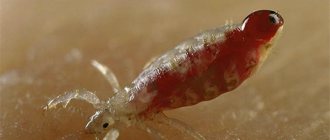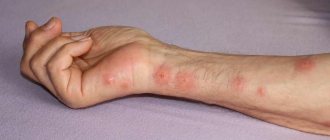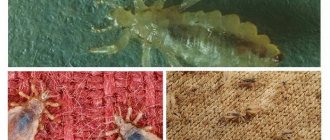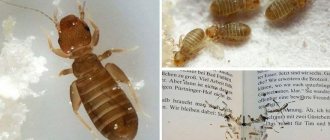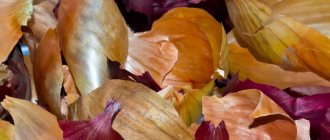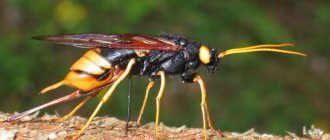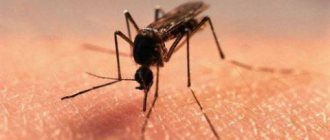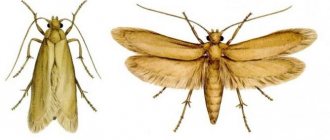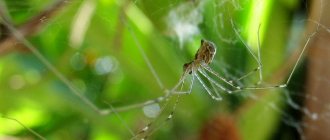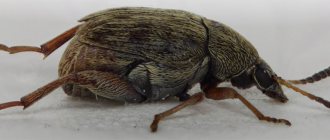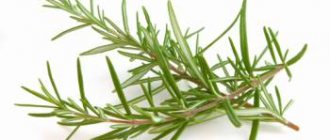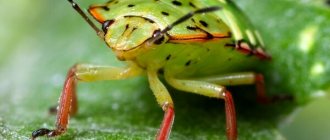Linen louse is the popular name for body louse, which is a subspecies of the more common human louse. The peculiarity of the body louse is its ability to live not on the scalp, but on clothing. Body lice have special adaptations in their bodies that make the habitation of these insects on clothing more convenient.
This subspecies of lice is not capable of living on the head, but is capable of interbreeding with other lice. The name “linen louse” was formed due to the main settlement and residence of this type of insect on underwear.
This habitat gives them easy and quick access to the body, which is a necessary source of blood. Linen lice can be called fastidious insects - parasites to the environmental conditions that surround them.
You can also trace the dependence of linen lice on the lifestyle that the infected person leads. If you are familiar with the characteristics of body lice, you can remove them from the body and clothing in a short time without the use of poisonous drugs.
What kind of parasite is a body louse?
Lice are divided into 3 types:
- pubic;
- head;
- wardrobe
What all types of lice have in common is rapid reproduction. At the same time, they create discomfort for the infected person and are carriers of infections.
The linen louse is small in size with a thickening in the center of the body. The length of an adult is 3-5 mm . The color is light gray or light yellow. There are no wings - this prevents them from moving long distances. The larvae of linen or body lice resemble adult individuals, only of a miniature size of 1-2 mm. Full development occurs after 3 moults have passed.
The optimal reproduction process occurs at high temperatures up to 30˚ C. Low temperatures (15˚ C) have a negative effect on reproduction and growth. The killing temperature for insects is plus 60˚ C and below minus 13.
The lifespan of males is up to 30 days. Whereas females exist for 45 days. During this period, one female lays 140 nits . As soon as the larvae emerge from the egg, they begin to suck blood once a day. At the same time, the first molt occurs, the second - after 5 days, the third - after 8.
The complete growth cycle from egg to subsequent reproduction is 16 days. The process of reproduction is repeated again. Two months are enough to increase the size of the colony several hundred times . Therefore, it is necessary to begin the fight against parasites in a timely manner.
Photo
Linen louse: appearance and physiology
Body lice are small wingless insects with an elongated abdomen and a body length of 2 to 3 millimeters. If you look closely, the edges of the abdomen have a small folded border. These folds form when the louse's stomach is empty.
Under such circumstances, the abdomen contracts, causing it to shrink. A distinctive feature of linen lice compared to other species is their light, transparent white abdomen. After drinking blood, the louse turns red or brown. Larvae (nymphs) differ from adults only in size - they are smaller. The nits are identical to those of head lice.
The female body louse usually deposits nits in seams, folds and folds of clothing, as well as in pockets.
More often than not, this will be a place where it is difficult for a person to reach. It is impossible to detect a nit without magnification - its size is 0.5 mm. Lice on clothing can be identified by the fact that these insects tend to stick together in groups of several individuals.
What is body lice?
The difference between body lice and other diseases is that lice do not live on the body, but hide in the seams of clothing. Although, without humans they do not exist. After all, they feed exclusively on the blood of the owner. Insects suck on it 4 times a day.
It is at the moment of hunger that parasites leave their home and move onto the body. Having had enough, they crawl back into clothes or bedding. The appearance of a well-fed parasite is very similar to a flea. Since the abdomen becomes burgundy in color, but they do not know how to jump, but crawl slowly.
Outbreaks of linen lice mark times during military operations. During this period, people are not able to properly monitor their body hygiene, and clothes are changed at the wrong time. IDPs who have to live in tents with a large number of people are also susceptible to this disease.
Where do linen lice come from?
If body lice were found in the house, do not think that this was due to poor cleaning in the house. Parasites can be brought into your home from the following places:
- clothing store;
- hotel;
- tourist trips;
- public transport and crowded places;
- going to visit.
Not everyone knows that the body louse is such a hardy parasite that it can live without its usual environment for 2-3 days. Finding themselves in favorable conditions, insects begin to multiply intensively and in a short period of time they are able to lay about 300 eggs.
Body lice bites
Linen lice affect the part of the body where there is no hair:
- groin;
- stomach;
- axillary areas;
- shoulders;
- neck;
- buttocks;
- small of the back;
- breast;
- upper back;
- waist.
Bite symptoms:
- the appearance of bluish spots on the body;
- headache;
- nausea;
- nervousness;
- itching near the bitten area;
- elevated temperature;
- intestinal disorder;
- allergy;
- pustules;
- healing of the bite after 4 days.
Photo
What does an insect look like, photo
A louse is an insect that parasitizes the human body, feeding on its blood. The body louse, unlike the pubic and head louse, lives outside its owner: in linen, in bed, in the folds of clothing, and only visits a person occasionally in order to once again feed on his health. It is very difficult to notice and examine the insect with the naked eye due to its small size, but examination under a magnifying glass has identified some external features that do not allow the body louse to be confused with any other parasite.
Body lice are very similar to head lice, but they differ from the latter in their larger sizes: for example, their body length is only about 4 mm. The insect is characterized by a transparent grayish-yellowish or whitish color, making them almost invisible. The louse has an elongated abdomen and a very small head with antennae; the parasite has no wings. The insect's legs are designed in such a way that they are not able to cling to human hair, so body lice are forced to live in fabrics. The oral apparatus of insects is characterized as piercing-sucking; the insect literally pierces human skin using special piercing needles and sucks blood through a thin proboscis.
The life cycle of the parasite is only 30-35 days, but in such a short period one female manages to lay up to 300-400 eggs, and in one day – up to 5-14. Body louse eggs are also called nits; they are attached to clothing with a special enzyme, an adhesive substance, so it is sometimes very difficult to easily tear them off from the fibers of the fabric. The shape of the eggs is similar to an elongated grain, and the size is striking in its tinyness - it is only 0.5 mm. Body lice larvae (the stage of development following the egg) are also small - usually their body size does not exceed 1.5-2 mm.
Sometimes this insect is confused with a flea, especially after the adult has had its fill of blood and its abdomen has noticeably darkened. The main difference in this case is the inability of the louse to jump, if the parasites simply crawl away from the bite site - these are certainly not fleas. It is also not difficult to differentiate between a bedbug and a body louse: bedbugs are much larger than lice, and their abdomen is darker in color. There is a similarity with a tick, but a louse can be distinguished from it by the number of legs: if a tick has 8, then a louse has only 6.
How dangerous is a body louse?
The fight against parasites should begin from the moment the bite is noticed. If this is not done, the wounds turn into pustules at the first stage, and the next stage is boils and ulcers. Subsequently, scars remain on the body.
You might be interested! Hemorrhagic rash: photos, causes and principles of treatment
By biting through the skin during a bite, the parasite injects an anesthetic secretion that prevents blood clotting. The bites are accompanied by severe itching , and in a dream a person scratches the wounds, which causes them to bleed. Severe damage causes excoriation. Regular bites cause roughening and thickening of the skin, and its color changes - yellow-brown.
The main danger from a bitten parasite lies in the transmission of infections:
- quintan;
- relapsing fever;
- typhus.
There are cases when pyoderma develops. You can read more about this disease in the article on photos, treatment and symptoms of pyoderma.
Revealing
You don’t have to rack your brains for a long time about how to detect body lice. It is necessary to carefully examine the bedding, things that the patient has worn for a month, and underwear.
Body lice develops outside the human body. Lice form nests in folds, seams, under the mattress, as well as in toys and furnishings with a fleecy surface.
On a note!
Lice on clothes in large numbers are clearly visible to the naked eye, but during search work it is better to use a magnifying glass or magnifying glass.
In one place there are adults, nymphs of different generations, eggs, and excrement. This is what a body lice nest looks like. Once parasites are detected, immediate action must be taken.
How to get rid of body lice at home?
In the case of linen parasites, it will take much more time than with head seams. Here you won’t limit yourself to just washing your hair with chemicals.
Algorithm of actions:
- take a bath with hot water;
- use tar soap for the body and for foam in the bath;
- stay in the hottest water for 15 minutes;
- Treat bite wounds with any alcohol lotion;
- bed linen and cotton clothes are washed at high temperatures with the addition of Permethrin or Karbofos. Permethrin is also used to get rid of scabies mites. How to cure scabies and what medications are used, see here.
- then dried, ironed on both sides;
- Dry blankets and mattresses in the sun or place them in plastic bags for several days and spray the chemical inside;
- Carefully iron clothes on both sides, pay attention to seams, collars, pockets, where they are most likely to be found;
- treat carpets and rugs with chemicals and ventilate them;
- wash the floors in the room with chemicals, since insects under good conditions can survive and crawl back onto clothes.
Garment processing
All clothing is subject to heat treatment:
- Wash cotton clothes in a machine, and the temperature should be maximum;
- dry in the sun and iron on both sides. The sun's rays will kill not only lice, but also their larvae;
Treat items not intended for high-temperature washing:
- in dry cleaning or at home with insecticides;
- ferry. To do this, switch the iron regulator to the “steaming” mode and run it over outerwear, fur hats and fur coats;
- in the freezer, in the cold. After freezing, dry in the sun.
- prepare the mixture: twenty percent soap, kerosene. Leave items in the solution for 20 minutes, then wash in cool water. One caveat, the smell does not dissipate well;
Remedies for body lice
Chemicals are used for things that are not intended to be processed at high temperatures and are large (mattresses, blankets, rugs, bedspreads).
So, you can use the following tools:
- Medifox product.
- drug "A-PAR";
- "Pedilin";
- "NOK";
- Pyrethrum powder is added to a sealed package with laundry for 2 hours;
- "Lauri";
- "Veda-2";
- "Buzzed."
After treatment, clothes and large items are ventilated and dried.
Folk remedies:
- the fern houseplant repels bloodsuckers;
- tansy, vinegar - added to water when rinsing, after processing;
- cranberry juice to remove nits;
- Euphorbia - placed in closets with clothes.
Preventive measures
To avoid encounters with such unpleasant insects as body louse, you should strictly observe personal hygiene. This especially applies to those places where the danger is great - hotels, sanatoriums, trains, etc. Under no circumstances should you use someone else's underwear, clothes or towel, even if it is your best friend. After visiting dubious and dirty places, you should bathe in hot water and soap and wash all clothes at maximum temperature.
When choosing clothes, you should remember that linen parasites do not like synergistic and silk fabrics, and choose cotton products for their habitat.
Body louse loves the smell of perfume, but such strong smells as tansy or kerosene frighten them very much. Therefore, when leaving home, it is better to always have a bag of dried tansy grass with you.
Bedding (mattresses, pillows, blankets) must be exposed to severe frost in winter or open sun in summer.
And finally, it must be said that even in the most difficult situations, with the right means of protection, you can protect yourself and your loved ones from such a nasty parasite as the body louse.
Treatment for body lice bites
Bites from bloodsuckers must be treated with alcohol-based products:
- balm “Rescuer”;
- alcohol lotion, cologne;
- "Star" ointment.
The bite may cause an allergic reaction in some people.
In this case, symptomatic treatment should be used:
- antihistamines (“Tavegil”, “Suprastin”);
- painkillers (“Phenobarbital”, “Nurofen”);
- headache remedies;
- decongestants.
Method of processing an apartment. Expelling lice
However, you should not rely only on the listed methods of combating lice. In most cases, no matter how carefully cleaning, washing, drying and ironing is carried out, you have to resort to more radical methods.
When, it would seem, all the means have already been used, but lice are no-no and appear in plain sight, it is necessary to disinfect the living space.
Steam treatment with herbal decoctions is famous for its greatest effectiveness. To achieve the best result, you need to go through every millimeter of your apartment or house, all the furniture, walls, floor. Large items that cannot be washed at home should be dry cleaned. After steam cleaning, you can wash the room with water and decoctions of pharmaceutical herbs, and then spread the remaining bunches in the corners of the house and cabinets.
Prevention
Getting rid of body lice is quite difficult, so you need to take preventive measures:
- observe good hygiene and wash at least twice a week;
- change underwear completely from all parts of the body;
- wash and iron clothes;
- to be treated for insect bites;
- do not appear in places where you can become infected;
- do not come into contact with unkempt people;
- do not spend the night in dubious places;
- do not put on clothes from the other “shoulder”;
- items purchased secondhand should be subjected to heat treatment;
- use personal hygiene products;
- teach children the rules of sanitation and hygiene;
- when handing out damp linen on the train, ask for replacement;
- use preventative agents: lavender and tea tree oil.
Fighting body lice - where to start?
It should be noted that these insects are perfectly adapted to various living conditions, so their complete destruction can take a lot of effort and time . Anyone who has encountered this problem at least once in their life knows that they should be gotten rid of in a comprehensive manner, attacking lice from all sides and not allowing them to survive and reproduce.
You should start, of course, with disinfection of all textile products that come into contact with the human body and personal hygiene procedures. It is important to remember that simple washing will not kill body lice. You should wash at a particularly high temperature, and what’s even better is to use boiling. Dry linen and clothes in the open air, after which all washed items must be ironed at the highest permissible ironing setting. Particular attention should be paid to: collars, folds, seams. These are exactly the places where bed lice like to hide.
Additionally, you should boil personal items such as hair clips, hair ties, combs and various headbands. After which it is recommended to keep them for 2-3 days in the fresh air , preferably in the open rays of the sun.
How to get rid of linen lice - folk methods
For more reliable destruction of parasites, before washing and boiling, you should treat things with a large amount of insecticides. You can also use kerosene-soap emulsion (at least 20%) or powdered pyrethrum. These preparations must be used to clean seams and joints on mattresses and pillows.
Acetic acid is rightfully considered an excellent method of disinfection . It is recommended to treat seams and joints of pillows and mattresses with a solution of acetic acid mixed with a small amount of water, as well as soak bed linen and clothes in the essence for 30-40 minutes before washing. Cranberry juice, due to its fairly strong concentration, is also an excellent solution for getting rid of linen lice.
Processing clothes and bedding in a steam-formalin chamber is guaranteed to kill all nits, larvae and adults.
It is important that as soon as you find at least some signs of body lice in your home, you should immediately begin to get rid of them and begin thoroughly treating your home. After all, these parasites have the peculiarity of extremely rapid reproduction. And of course, you should immediately take care of personal hygiene. To do this, get rid of contaminated clothing, take a shower using a hard washcloth and laundry or tar soap.
Pubic lice
These insects are localized in the area of the pubis, scrotum, perineum, and perianal fold. The structural features of the legs of parasites ensure their reliable attachment to such hair with a triangular cross-section. These lice in humans are occasionally found in the armpits, on the body, eyelashes, and eyebrows.
This is what pubic lice look like.
The length of males is 1 mm, the size of females is about 1.5 mm. Pubic lice are dark in color, the parasite visually resembles a crab, and the abdomen is wide and short.
Pubic lice feed frequently, with short breaks, the volume of one blood intake is 0.1 ml. If insects are left without food for 24 hours, they die. Parasites live from 21 to 28 days. The female lays from 1 to 3 eggs per day, and about 30 larvae throughout her life.
Pediculosis pubis is also called phthiriasis.
Reader Frequently Asked Questions (FAQ)
Expert opinion
Alexandra Valerievna
Doctor-Trichologist
Is there an organization for the extermination of body lice and what is its name?
The state organization for treating premises against parasites is the SES. There are also private companies that, if they have a license, can also conduct similar events.
How quickly do linen lice reproduce?
The fertilized female lays eggs, which after a few days transform into larvae. The full cycle of transformation into a sexually mature individual takes about 2 weeks.
Do lice live in feather pillows?
Lice can live in pillows, including feather pillows.
How long does a body louse live without a person?
A body louse can live without its owner for 4 days; if the air temperature reaches 30 degrees or higher, then it will live only 1 day. But at temperatures below 9 degrees Celsius, the parasite goes into hibernation and can live without food for up to 2 weeks.
Expert opinion
Alexandra Valerievna
Doctor-Trichologist
How to remove linen lice from a sofa?
Often lice larvae or adult insects remain on the surface of furniture. Therefore, proper disinfection of upholstered furniture is the key to preventing re-infection.
There are several methods of disinfestation:
- take the sofa outside (if possible) for several days, then clean it with a vacuum cleaner.
- treat the furniture surface with a steam generator or steamer.
- treat the sofa with Medifox, A-par, permethrin, karbofos and others.
How long does it take for linen lice bites to go away? And how to treat them?
If all the lice are destroyed, then the bite wounds, not complicated by the inflammatory process, heal on their own in 3 to 4 days. If the infection is severe, the healing process may take about a week. Hydrogen peroxide can be used for disinfection. Antiallergic medications can be used to reduce itching. The bite site itself can be lubricated with Rescuer balm or other ointments that reduce itching.
IMPORTANT! If there are numerous bites on the body, as well as with a pronounced inflammatory process, you should seek medical help and not self-medicate. How long do lice live on things?
How long do lice live on things?
Under favorable conditions, the life cycle of lice is about 8 weeks, then they die.
What are nits?
Nits are lice eggs. Getting rid of nits is much more difficult than getting rid of adults, since the nits are more viable.
Symptoms of pediculosis
How do you know if you have lice? To do this, you need to know the main symptoms of this disease. These include constant itching, insect bites, irritability, and the formation of mats on the head.
Itching
Other symptoms of lice may not be immediately noticed even with a thorough examination, but itching immediately attracts attention. If your head itches at night, washing your hair does not bring relief - this indicates that the person has lice.
The behavior of the infected person also changes: he constantly itches, fiddles with, combs, and straightens his hair. Babies in such a situation begin to constantly act up and cry for no apparent reason.
Getting rid of head parasites
How to remove lice? There are many pharmacological remedies for these parasites that are sold in pharmacies. But folk remedies are also used. Auxiliary tools that can help when choosing any method include a hair dryer, a fine-tooth comb, tongs, a low-current comb and a magnifying glass.
Not everyone is able to tolerate the active chemicals found in commercial sprays and shampoos. Such means are prohibited:
- for allergies;
- children under 5 years old;
- pregnant and lactating women;
- asthmatics;
- persons with skin ailments.
Many people prefer not to use chemicals, believing that folk remedies are safer. This is true, and besides, such recipes have a positive effect. Popular methods for eliminating head lice are described below.
Using infusion and decoction
What else can you use to get rid of lice? Elecampane root is considered effective. Both fresh and dried raw materials are suitable. The proportions are calculated independently: the more saturated the solution, the better. The grass and roots are immersed in boiling water for at least an hour. The composition is filtered, cooled and lubricated with hair. It is necessary to withstand for at least 8 hours, wrapping your head with cling film and a warming cap (towel). After washing your hair, you can comb your hair.
We also effectively remove lice and nits at home using a decoction of burdock. The roots and fruits of the plant must be poured with boiling water. After an hour, strain and wash your hair with the broth. Then comb out with a fine-toothed comb. Sessions are performed every day until the bloodsuckers are completely eliminated.
